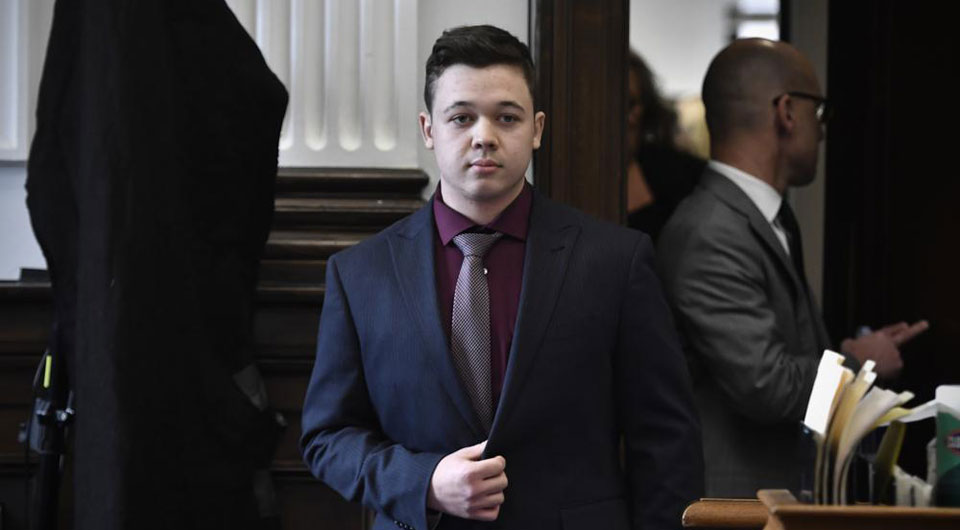
Kyle Rittenhouse, the armed 17-year-old from Illinois who killed two people and wounded another during a Black Lives Matter (BLM) protest in Kenosha, Wisconsin, was acquitted Friday of first-degree intentional homicide and four other felony charges. The polarizing case that symbolically put vigilantism on trial will no doubt have rippling repercussions. Yet, one thing stands clear: that the United States judicial system works differently for different types of people. Justice was served, but one can argue it was in the service of far-right ideology and extremism.
Rittenhouse ended up in Kenosha Aug. 25, 2020 because he was answering the call of Kevin Mathewson, a one-time city alderman, to defend the city “from the evil thugs.” The “thugs” he was referring to were BLM protestors. Rittenhouse became part of a growing trend of armed groups of extremists who counter BLM protests presenting themselves as unofficial extensions of law enforcement and security guards. Many carry around their big rifles under the guise of protecting property only to end up themselves as the initiators of violence.
Rittenhouse became part of that legacy of violence when he used his illegally obtained AR-15 to shoot Joseph Rosenbaum and Anthony Huber and wound Gaige Grosskreutz. He claimed it was self-defense. The far-right rallied to his side, justifying his actions. The justice system, seemingly with the help of presiding judge Bruce Schroeder, did the same.
A biased judge?
Perhaps the world should have seen the writing on the wall when Schroeder made some eyebrow-raising decisions when setting the parameters of the trial.
The judge refused to allow the word “victim” when talking about the men Rittenhouse shot. Yet he allowed words such as “rioter” and “looter” for the men if the “evidence supported it.” Schroeder claimed that allowing the victims to be referred to as victims would create bias with the jury. Yet his double standard is revealed when allowing them to be referred to disparagingly by the defense.
Later the judge would allow the defense to press Rosenbaum’s fiancée, Kariann Swart, on the purpose of the medication Rosenbaum was on at the time of his death. Swart revealed that it was for bipolar disorder and depression. One could argue that allowing the defense to focus on this detail helped to paint one of the victims as an unstable aggressor.
On Veterans Day, Schroeder asked everyone in the courtroom if they had served. The one person who answered in the affirmative was John Black, a man in the court that day to testify in support of Rittenhouse’s defense. Schroeder had the court give Black a round of applause for his service in the army. Black then took the stand and gave credence to Rittenhouse’s claim of self-defense. One could argue, by the judge making members of the jury applaud Black, he gave the man’s testimony even further legitimacy in Rittenhouse’s favor.
Schroeder allowed Rittenhouse, the man on trial for murder, to pick his own jury from a random bingo-style drawing. This was pointed out as being unusual in court proceedings as this task usually falls to the courtroom clerk.
In a crucial blow to the prosecution, the judge dismissed one misdemeanor count of illegal possession of a dangerous weapon by a person under 18.
And in what is perhaps the most fitting symbolism for the judge’s behavior, Schroeder, who somehow forgot to silence his phone during court, allowed the jury to hear the song God Bless the U.S.A. by Lee Greenwood when his cell went off. This is a song that is often used by former President Donald Trump at his MAGA rallies.
One could argue that these happenings did little to sway the jury one way or the other, but it is hard to deny that it created an environment and narrative that seemingly gave Rittenhouse the benefit of the doubt. It also highlights the importance of voters paying attention to those that are elected to preside over our criminal justice system.
There are approximately 30,000 state judges in the United States. Many of them are elected into their office. This means that their seat can be very dependent on politics. Schroeder is no different. He is the longest-serving trial judge in Wisconsin. First appointed to the position in 1983, he has won reelection every time he has campaigned. In 2020 he garnered over 90% of the vote, having run unopposed.
When looking at the hundreds of thousands of cases that determine the fate of so many, especially in such a polarizing case, it is important to remember that even then the power of the vote is so important. This also goes for the acknowledgment of inequality in the judicial system as a whole.
A biased system
In an upcoming interview with far-right pundit Tucker Carlson, Rittenhouse is seen in a clip saying that “it wasn’t Kyle Rittenhouse on trial. It was the right to self-defense on trial, and if I was convicted, no one would ever be privileged to defend their life against attackers.” He goes on to say that the trial had nothing to do with race. Yet, what Rittenhouse fails to acknowledge is that history shows that his right to claim self-defense, and also be given the benefit of the doubt that he is telling the truth, relies heavily on his race, as white people are shown to be afforded more benefits in a system that claims justice is blind.
According to a Criminal Justice Fact sheet put together by the NAACP, one out of every three Black boys born today can expect to be sentenced to prison, compared to 1 out 6 Latino boys, and one out of 17 white boys. Black people are incarcerated at more than 5 times the rate of whites. The fact sheet also notes that nationwide, despite making up 14% of the population, Black children represent 32% of children who are arrested, 42% of children who are detained, and 52% of children whose cases are judicially waived to criminal court.
Couple this with the fact that young Black people are often not allowed their innocence in media representation. Trayvon Martin, the 17-year-old gunned down by George Zimmerman, was portrayed in one too many media outlets not as a young boy, but as a potential “thug” with a rebellious streak. Mike Brown, the 18-year-old gunned down by a police officer, had just graduated from high school eight days before his death. The corporate media rarely showed his graduation photo and referred to him as a man more than as a teenager.
Rittenhouse, on the other hand, would be touted as a patriotic hero by many on the right, including the far-right media. This is due to the years of enabling by a presidency that galvanized groups such as the Proud Boys and others like them. Rittenhouse, a Trump supporter, was clearly inspired by the former president’s rhetoric of keeping “order.” But given Trump’s past scapegoating of people of color, it is clear the order that people like Rittenhouse have been radicalized to maintain is based on racism and bigotry.
In a sense, Rittenhouse was correct in saying that his trial was not only about himself. In reality, it put white vigilantism on the stand as well. The verdict could have condemned the rise of vigilante militias with white supremacist leanings. Instead, it gave it legitimacy. We should all be concerned about what this means for the future.












Comments